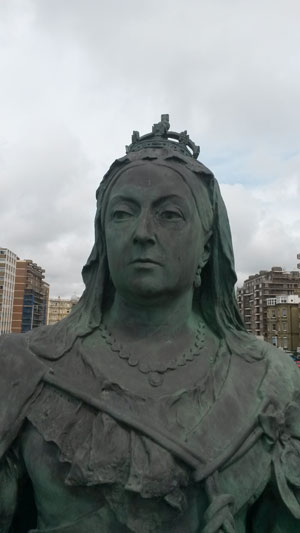Robert Nemeth: Building Opinions
The Queen Victoria Statue
The statue of Queen Victoria at the foot of Grand Avenue in Hove was erected as a celebration of her Diamond Jubilee of 1897. It was unveiled in 1901, after her death, which meant that wreaths were placed around the covered statue prior to its exposure.

The project was carried out by Thomas Brock, a famous sculptor whose previous work included the relief of the widowed Queen Victoria on coins from 1893-1901. Brock became ‘Sir Thomas’ when he was knighted, apparently on the spot by King Edward VII, following the completion of the huge Victoria memorial in front of Buckingham Palace.
I met Bob Colwell and Alan Craig of London-based PAYE Conservation (whose previous projects include work at St Pancras Station, Windsor Castle and Cliveden House) who had just finished pressure-washing the entire structure. The application of wax is all that was left to do. A scaffold was a great opportunity for photographs.

At two levels up, it is clear that many features exist on the statue that are not easily spotted from below. In Queen Victoria’s left hand is an orb that is topped by a winged figure denoting victory which bears a passing resemblance to the nearby Peace Statue (also in the process of being cleaned incidentally). In the other hand is a sceptre.
“At two levels up, it is clear that many features exist on the statue that are not easily spotted from below.”
The statue is made of bronze and its plinth of granite and marble. Each side of the plinth features an inlaid bronze tablet with Science and Art, Education, Empire and Commerce represented to the north, east, south and west respectively.
It won’t be long before maquettes of the three winning designs for the proposed new Hove Plinth, intended for the promenade nearby, are released. This Hove Civic Society initiative has attracted nothing but quality entrants. Standards in the area were already high after all.




















